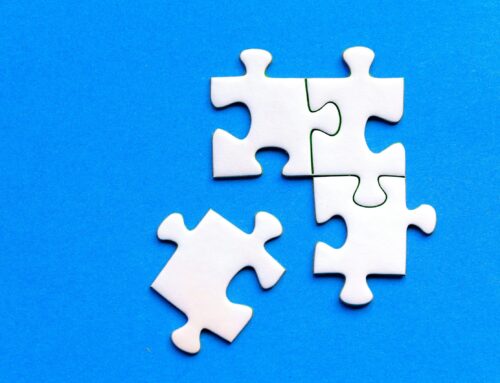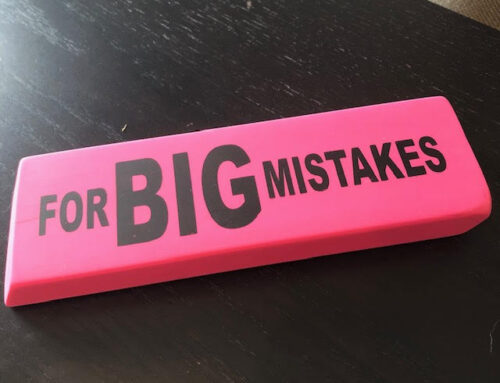People often ask me what the ideal size is for a group. Obviously, this depends on whether you are pulling together a team, holding a meeting, running a seminar or rallying the troops. Like any good consultant, I give you a solid answer: it depends. But if that doesn’t quite give you enough to go on, let me expand.
Ideal number for a team: 7
Across Fortune 500 companies, CEOs have an average of 7.5 direct reports, with a wide range across companies. Over the years, the number of direct reports has doubled from about five in the mid-1980s to almost ten in the mid-2000s. Where should you land across these ranges? It depends on how much time you are able to dedicate to your team versus other projects. It also depends on the experience level and initiative of team members. Fundamentally, a leader needs to determine whether they have the right mix of dynamics. And interestingly, one study found the potential social interactions among team members hits a tipping point at about five people, adding to the complexity of the group dynamic when you go beyond this number. Of course, every leader needs to consider the balance between strong team dynamics and getting the job done.
Ideal number for a meeting: 5-9
Amazon CEO Jeff Bezos, a meeting minimalist, likes the “two pizza rule”. In other words, he likes meetings to include no more than those who can be fed by two pizzas. This sounds fairly close to the “seven plus or minus two” guideline. Any more and you may receive too much conflicting input, casual observations and side conversations. As well, it becomes exponentially harder to find a common meeting date and workable space the more people you invite.
The “seven, plus or minus two” rule also applies to dinner parties. With this number you can have one conversation happening around the table. Any more than this, however, and the group starts to break up into separate conversations. While this isn’t necessarily a bad thing, it is helpful to know what to expect.
Other research found that five is the ideal size when groups were trying to accomplish a specific task.
Where should you land in this range of five to nine? It depends on your meeting purpose. If you are brainstorming, you often benefit from inviting many more people. For decision-making, a small group is best, with odd numbers facilitating voting. But fundamentally, it truly does depend on the situation. Most importantly, you need to include the right decision makers.
Ideal number for a workshop: 30-50
Technically, a seminar can have any number of participants from a handful of people in a boardroom to thousands of people in a stadium. Having presented to hundreds of different group sizes over the years, I can certainly point to some trends related to formality and interaction across group sizes:
At the outset, there are benefits to both large and small groups. But regardless of the group size, the more groups know one another, the more playful and interactive they tend to be. But generally, small groups (i.e., less than 15 people) tend to be less formal. People are comfortable asking questions and discussions are easily tailored to their individual goals. Large groups (more than 100 people) can prompt lots of questions as well, but these stem from a select few. Not everyone is inclined to speak up in a large group. As a result, many participants settle into observation mode, which is a less effective learning style. But you can really generate a lot of momentum and collective energy with a large group. And that’s beneficial to everyone. When I reflect back on working with several different group sizes, I would pick a range of 30 to 50 people as the ideal for a workshop but I can easily point to examples where bigger or smaller groups had equally strong dynamics.
Ideal number for announcing: the bigger the better!
When you are rallying the troops, generating a buzz and announcing big things, the more people you have, the better. Obviously, you want to reach out to as many people as possible in these situations to create a buzz. I’m picturing Forrest Gump on Capitol Hill right now.
The 8-18-1800 Rule:
Invite no more than 8 people to help make a decision, no more than 18 for brainstorming and 1,800 (or more!) to rally the troops.
Ideal Number of People in Social Circles
What about social circles? Robin Dunbar, a University of Oxford anthropologist and psychologist claims the ideal number is 150. Any more and he proposes relationships cannot not be sufficiently nurtured. Sure, one can have countless social media “friends” these days, but those do not equate to real connections. Across large organizations, leaders may be well served by generating a collegial feeling among groups of approximately 150.
We’ll explore the topic of social circles more in a future article.
Whatever your group size and whatever the function of the group, being invested in ensuring a variety of voices are heard (and helping to redirect those less productive conversations that sometimes occur) will optimize the group dynamic for everyone.
I’d love to hear your views on ideal group size and how you manage these interactions. Please share in the comments below.








Great assessment/insight, Anne … your experience shows through. It also matches up well with our experience facilitating scores of research focus groups, public consultations and planning sessions in our own practice. Excellent guidance for those wondering about ideal group size. /Rob.
Thanks so much for your comment, Rob! I’m glad to hear this matches with your experience. Ann